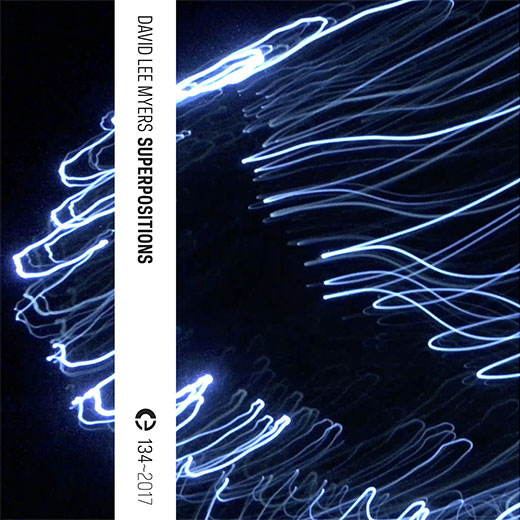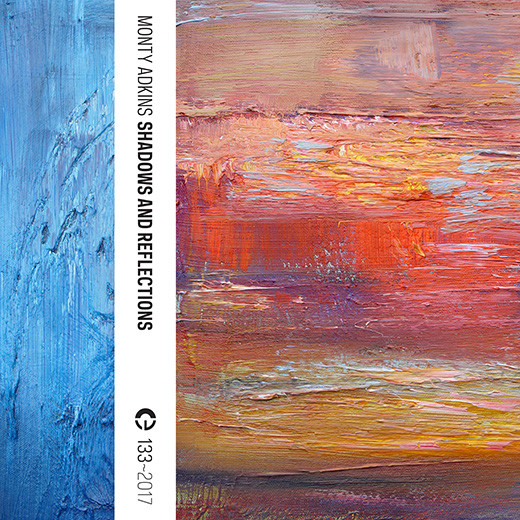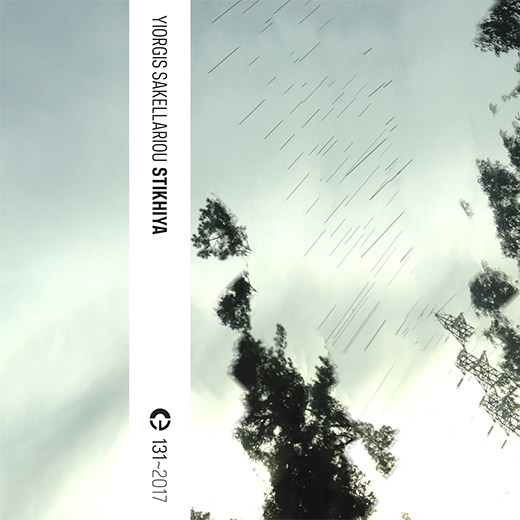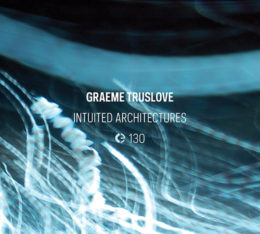
David Lee Myers’s “Superpositions†reviewed by Touching Extremes

I just love how David Lee Myers ends his notes for this cassette release, to the point that a quote is inevitable:
“Feedback is far more than a public address system in misalignment; it is a core principle of universal importance.â€
He is, of course, referring to the inexplicable criteria of self-regeneration at the basis of that concept of infinity that most people cannot seem to accept, fossilizing themselves on the so-called search of a “beginning†somehow instigated by a theoretical “originatorâ€.
However, energy – and, consequently, sound – does not need anyone or anything else to evolve, operate and heal (Roland Kayn would approve). On occasion its invisible form is rendered perceptible, courtesy of selected individuals who – for a change – might not be interested in making an audience believe they’re the owners of the unknown. Myers, either under his real name or the Arcane Device pseudonym, has been studying these processes alone, as every discerning human specimen should. He never talked too much to made us aware of his discoveries: the music truly speaks for itself.
Electronically generated waves have a unique way to respond to the sentience of someone who deeply respects what will always remain a mystery for earthbound creatures, in spite of the latter’s delusional “progressâ€. They are pliable, harmonically rich, ceaselessly beautiful. The oscillations, in conjunction with sequential structures devoid of regular “patternsâ€, produce geometries that no word can carve in the stone of semi-illiterate presumption. As in the bulk of Myers’ releases, the eleven tracks of Superpositions offer a chance for relinquishing the pomp of intellectual grandeur and stick to what really constitutes the nourishment of our very being.
Merging stasis and movement through textural transformations appearing to the ears as utterly natural phenomena, Myers broadens the palette of knowledge without burdening one’s consciousness. An evident confidence with superior layers of understanding is directly proportional to the skilful organization of acoustic events that lots of wannabe scientists disregard as “bizarre noisesâ€.
Well, levels do not exist for nothing. Massimo Ricci
via Touching Extremes
Monty Adkins’s “Shadows and Reflections†reviewed by Music Won’t Save You

Pressoché in contemporanea con “A Year At Usher’s Hill“, il suo lavoro neoclassico-ambientale maggiormente impressionistico, Monty Adkins propone due lunghe tracce su cassetta, realizzate in sinestesia creativa con il pittore Andy Fullalove.
Come gli strati di colore danno forma a un’immagine, così l’artista inglese lungo i venti minuti ciascuna di “Sounds Of The Shadow†e di “Sounds Of The Sun†dispiega una sequenza di chiaroscuri sonori sotto forma di esili drone e risonanze incorporee. I temperati contrasti che ne risultano si soffondono nelle spire di un’ambience espansa e profondamente meditativa, propellente liquido per tutti i sensi.
Yiorgis Sakellariou’s “Stikhiya†reviewed by Musique Machine

Greek composer Yiorgis Sakellariou creates deep listening electronic pieces in a dynamic musique concrete style. His first releases came in 2013. As of 2017, he has found a home on the excellent Crónica label, which released many of my favorite artists of recent years including @c. His 6th full length, “Stikhiya” is made up of two pieces, sides A and B, each roughly 18 minutes in length. It is a very limited edition of 100 copies, and a cassette only release.
It is a subtle, dark soundscape with heavy use of field recordings / natural sounds, and a distinct absence of synthesizer. There are many permutations of rushing, billowing air, air forced through tubes and blowing through the leaves of trees. There is a general feeling of weatherbeaten desolation, as if all the sources of all these sounds were ruined debris from a deserted shell of a building, collapsed in on itself and rotted with rain. I can hear that it was recorded in a wet, cooler climate from the texture of the sounds. Cracks of thunder and heavy rain are clearly audible at several points.
Yiorgis’ equipment is occasionally aimed at man-made creations as well, particularly heavy machinery. There are distinctly industrial touches: muffled clangs of distant metal objects, restlessly shifting pink noise, forceful blasts of compressed air mechanically released from pipes. These are woven in amongst natural sounds with a satisfying density and rapid pacing uncommon for avant garde music.
The timbres are crystal clear and complex, leaving room for a world of emotional inference. The crisp vividness of the album is striking to the point of making it immediately likeable. The three dimensionality of the acoustic space is nothing short of amazing, likely the result of using handheld stereo recorders. Digital processing is kept largely to a mininum, transparent so as not to make itself too obvious, with the exception of a couple acoustically detached, purely electronic sounds, such as the noise as the end of side A.
This album is an absolutely wonderful experience, an ode to nature and natural sound captured in vivid clarity, with no excess, nothing cheesy to distract from its replayability and depth. The mind’s eye runs wild to hear these sounds in an isolationist context. It is among the most perfectly paced and expertly produced musique concrete albums I’ve ever had the pleasure of listening to. I personally think it deserves a wider distribution. Josh Landry
via Musique Machine
New release: David Lee Myers’s “Superpositionsâ€
Witness the common phenomenon of feedback such as produced inadvertently through poorly configured microphones and loudspeakers in public amplification situations: the sound coming from the speakers finds its way back into the microphones and produces an uncomfortable squealing sound. The component elements are electronic and acoustic, the latter involving air movement and vibration of physical objects. But internal electronic feedback is quite a curious animal, something distinct from electroacoustic feedback. It can operate – feed back – eternally, but make no sound; vibrate no air, reach no ears. It is this silent marching of electrons, antlike, about some elaborate roadway perhaps only known to themselves which is so fascinating to an artist.
The introduction of the early guitar effects devices was the real opening of an interest in sound and music for me. The initial impression of an Echoplex tape-delay (ca. 1966) still reverberates, as it were – I put down my guitar and focused on this thing itself; who needed a guitar now? A sound goes in one end and comes out the other, somehow transformed into a modified clone of itself; partially the same, but evolved. And it is significant that this transformation is a manipulation of the sound’s time-path. Most audio effects boxes – and all of those which interest me most – are based on manipulations of time, that strange entity which even the most advanced scientific analyses have yet to explain convincingly. Since childhood this inexplicable thing called time has puzzled and excited me, and in the effects device the question comes forth along with a satisfying aesthetic pleasure. Further, the concepts of time manipulation and feedback come together in the ancient ourobouros symbol which was intended to speak of several things at once: self-referral (consciousness), recurrence, and eternity. Feedback is far more than a public address system in misalignment; it is a core principle of universal importance.
DLM
David Lee Myers (aka Arcane Device) releases his latest album of Feedback Music, titled Superpositions. These pieces have been created through the use of specially configured electronic components, none of which are designed to produce sounds on their own. Rather, audio processors are wired so that their inputs are fed their own outputs, as well as the outputs of other processors, via a series of matrix mixers. The whole assemblage is played as a real-time instrument, producing tones and patterns ranging from subtle sound washes to cacophonous deluges. Superpositions is a meditation upon the unseen forces and energies inhabiting the subatomic world.
David Lee Myers finds his sounds in the off-screen space of feedback networks. By patching the output of an electronic audio device, such as a mixing board, back into its input, Myers is able to conjure and navigate within this space… He takes snapshots of the sonic entities populating these spaces then arranges them into etheric photo-mosaics.
Kim Cascone
David Lee Myers is a sound and visual artist living in New York City. Since 1987 he has produced electronic music via his custom â€Feedback Machines“ under his own name, as well as Arcane Device. Myers has had dozens of recordings released by Starkland, ReR, Generator, Line, Silent, Pogus, RRRecords, Staalplaat, Monochrome Vision, and many other labels. Collaborations have been produced with Gen Ken Montgomery, Thomas Dimuzio, Ellen Band, guitarist Marco Oppedisano, Dirk Serries, and noise maestro Merzbow. Two Albums were created with legendary electronic pioneer Tod Dockstader, and four others with Hamburg’s master sound manipulator Asmus Tietchens, with a fifth in progress. Myers has performed his sounds and visuals at New York’s Generator, The Kitchen, Roulette, Experimental Media Foundation, the Knitting Factory, Clocktower, MoMA/PS1, Outpost Artists Resources, Trans Pecos and Silent Barn, as well as the San Francisco Electronic Music Festival, and the Boston Museum of Modern art, among others.
Superpositions is available as a limited-release tape and as a digital download.
Monty Adkins’s “Shadows and Reflections†reviewed by Rockerilla

Il tempo, il paesaggio, le immagini e le sensazioni da essi veicolate continuano a essere al centro delle creazioni di Monty Adkins, che in due lavori paralleli applica un a ne approccio sinestetico alla composizione ambientale. A Year At Usher’s Hill mette in luce il pro lo più emozionalmente accogliente del sound artist inglese, racchiuso in undici placide tracce incentrate su brevi loop e stille armoniche echeggianti in un ambiente sonoro ariosamente ovattato. La dimensione spaziale permane elemento decisivo dell’espressione di Adkins, de nita da semplici note pianistiche e decompresse texture organiche, dalle quali prende forma un’impressionistica ambience orchestrale. Pressoché in contemporanea l’artista inglese propone due lunghe tracce su cassetta, realizzate in collaborazione con il pittore Andy Fullalove. Come gli strati di colore danno forma a un’immagine, così Adkins lungo i venti minuti ciascuna di Sounds Of The Shadow e di Sounds Of The Sun dispiega una sequenza di chiaroscuri sonori sotto forma di esili drone e risonanze incorporee. I temperati contrasti che ne risultano si so ondono nelle spire di un’ambience espansa e profondamente meditativa, propellente liquido. Raffaello Russo
Graeme Truslove’s “Intuited Architectures†reviewed by Bodyspace

Enquanto arte, a arquitectura é uma das mais antigas da humanidade. Primeiro existiram as casas e os templos, «meios com vista a uma exteriorização: a cabana, a habitação do deus, pressupõem habitantes, homens, imagens de deuses» [Hegel, Estética]. Milénios depois, a arquitectura ganhou a sua própria teoria, com De Architectura de Vitrúvio: as construções deveriam apoiar-se em três princÃpios básicos – solidez (firmitas), utilidade (utilitas) e beleza (venustas).
Na arquitectura intuÃda de Graeme Truslove, que assina aqui um novo disco pela Crónica que mais age como compilação – todas as peças foram compostas entre 2004 e 2010 -, a teoria passa pela junção de dois extremos opostos: a composição electroacústica num meio fixo, e a improvisação livre. Por outras palavras, Intuited Architectures é uma pergunta: como se fundem duas linguagens diferentes?
A resposta estará a cargo do ouvinte, que provavelmente será o único que conseguirá avaliar, de forma independente, se o artista conseguiu realizar aquilo a que se propôs. O que esse encontrará em Intuited Architectures é uma mistura de sons electrónicos e analógicos, como gigantescas construções sonoras erguendo-se no vazio, tijolo sobre tijolo e cimento sobre cimento de forma a que o edifÃcio final – a peça – possa perdurar no tempo. Sólido, útil e, até, ocasionalmente belo. Paulo CecÃlio
via Bodyspace
Yiorgis Sakellariou’s “Stikhiya†reviewed by Gonzo Circus
Monty Adkins’s “Shadows and Reflections†reviewed by Chain DLK

“Shadows And Reflections†aims for ‘a sense of meditation, contemplation and relaxation’ as it develops sonic ideas originally created for an audiovisual exhibit at Bradford Cathedral in 2016 that drew inspiration from the restored altarpiece and stained glass windows of the cathedral. Designed for the cassette format, it’s two twenty-minute pieces of warm, comforting, eventless drone soundscape with a decidedly ‘empty church’ feel.
This is simple, floating ambience that can’t help but induce a sense of steady calm. The evolution of the tones is imperceptibly glacial. The second piece “Sounds Of The Sun†has an ever so slightly more tubular, metallic resonance to it, but I may only think that because my brain started to adapt to the noise level as its new normal.
Thankfully it’s available digitally too, as the often soft and subtle soundscape can’t really benefit from tape hiss- it’s a very purist bit of soundscaping that’s pleasantly soporific and attention-avoiding. Stuart Bruce
via Chain DLK
“Stikhiya†reviewed by RNE 3 Atmosfera

Stikhiya es el Nuevo trabajo del compositor de música electroacúsitica Yiorgis Sakellariou, miembro del centro ateniense para la investigación de la música contemporánea y de la música electroacústica helena.
Stikhiya es la palabra usada por el poeta ruso Aleksandr Blok del siglo XX para describir el valor fundamental de la inmediatez primitiva. Contrario al intelectualismo y la racionalidad, Stikhiya emerge de las experiencias holÃsticas orgánicas y se percibe como una fuerza insondable y sin forma que crea asombro e inspira mitos.
Cuando la música es experimentada como Stikhiya, su poder catártico abre reinos expandidos de la realidad y conduce a lo que Iannis Xenakis ha llamado una “verdad inmediata, rara, enorme y perfecta.

